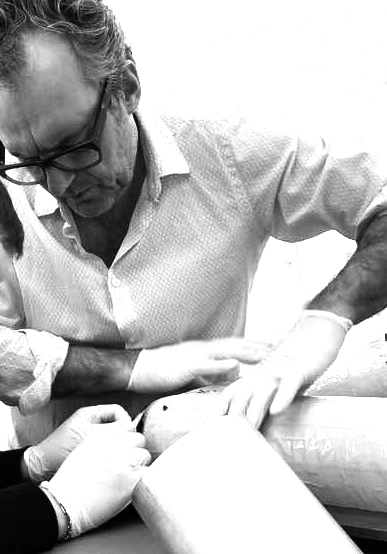Via Lewandowsky: Not An Artist—The Artist

German conceptual artist Via Lewandowsky is a master of ambiguity. Through installations, objects, text, and performances, he teases apart the mechanisms of perception, memory, and political ideology, leaving viewers in a productive unease.
From East to Everywhere
Via Lewandowsky (a pseudonym that itself signals a refusal to be fixed) studied at the Academy of Fine Arts in Dresden during the final decade of the GDR. He was a founding member of the experimental performance group Autoperforationsartisten—an avant-garde collective that blended Fluxus, body art, and theatre with anarchic energy. This formative experience sharpened his interest in art as a form of disruption.
Following the fall of the Berlin Wall, Lewandowsky quickly became a prominent figure in the evolving cultural landscape of reunified Germany. His work captured the absurdity and trauma of political transition, often drawing on the surreal remnants of everyday life in the East. But rather than focus solely on post-socialist critique, his practice grew broader and more nuanced, tapping into universal themes of control, illusion, and memory.
Conceptual Provocations
Lewandowsky's oeuvre defies categorisation. He works fluidly across media: sculptures built from ordinary materials, room-sized installations, kinetic objects, text-based interventions, and time-based performances. What unites these varied forms is a conceptual rigour and an often biting wit.
A recurring strategy in his art is manipulating language and logic. Words may be reversed, disassembled, or turned into sculptural forms, as in works like Lügenmuseum ("Liar's Museum"), where truth and fiction blend seamlessly. In his sound installation Heimatkunde, the German concept of "homeland" is reduced to a disorienting chorus of disjointed utterances, subverting its nationalist overtones.
Another key motif is malfunction—machines that break down, systems that collapse, or processes that loop endlessly. These works playfully undermine the Enlightenment faith in reason and progress. In doing so, Lewandowsky questions the stability of meaning in contemporary society.
Memory and Monument
One of Lewandowsky's most resonant concerns is the construction of historical memory. His public art projects often reframe monuments and institutional narratives. In Verscheißern (2013), installed in a former Stasi prison, he created porcelain urinals inscribed with the word "truth"—a stark commentary on state surveillance and repression.
For the 2005 Berlin exhibition 36xDeutschland, he placed a wooden house upside-down in front of the German Bundestag, a surreal gesture that called into question national identity in a newly unified Germany. These provocations don't offer answers; instead, they compel audiences to interrogate their assumptions about history and belonging.
Playful, Political, Precise
Despite their conceptual density, Lewandowsky's works never feel didactic. There's a dark humour at play—an absurdist sensibility that evokes both Kafka and Monty Python. Viewers may laugh, but the laughter often catches in the throat, revealing uncomfortable truths about ideology, trauma, and the human condition.
This balance of play and precision is what makes Lewandowsky so vital. He doesn't simply represent reality—he reconfigures it, allowing us to glimpse its hidden structures and contradictions. In an age of political polarisation and algorithmic certainty, his work remains a compelling invitation to doubt, reflect, and question.
Not An Artist—The Artist
In an era overloaded with aesthetic noise and ideological posturing, Lewandowsky stands apart. He doesn't flatter the viewer with clarity or seduce with beauty. He disorients, provokes, and excavates. Where others decorate or distract, he dismantles—and in doing so, shows us the deeper architecture of belief and perception.
He is an artist because he navigates the political without becoming propagandistic, the conceptual without becoming sterile, and the humorous without losing gravity. In a cultural climate that craves authenticity but is saturated with performance, Lewandowsky offers something rarer: work that destabilises to reveal.
In short, if there is one artist who embodies the paradoxes, illusions, and confrontations of the present moment, it is Via Lewandowsky. Not just an artist. The artist.
Via Lewandowsky is not an artist who seeks to comfort or console. Instead, he offers us the gift of productive disorientation—a reminder that art can be a space where meaning is not fixed, but forged anew through confrontation, confusion, and curiosity. In the ruins of certainty, he plants seeds of insight.